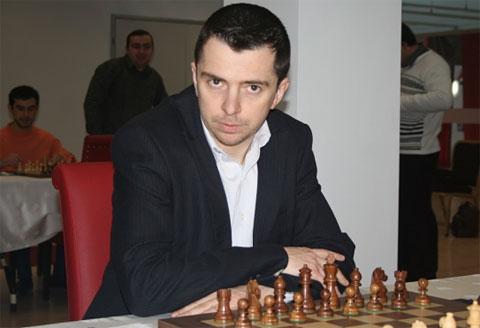
Typical Positions. Part 4.
Not all openings require knowledge of specific lines; this is especially true for 1.d4 openings. I have been playing 1.d4 for many years now and with minimum energy spent on openings, I manage to get high scores vs like-rated opponents. This is probably from having vast experience in many different set-ups and from knowing typical plans. However, there is a price to be paid for a player like me who does not rely on ultra-sharp opening lines. The advantages that I get out of openings are minimal and sometimes I end up in equal positions with pleasant play for white. And it is fine by me - but sometimes my games last 6 hours, while neighboring games end in the opening after 1 hour. One such position that arises from triangle system was a bit unpleasant to play, until I went over the recent games where white found very nice plans to counter black's set-up.

After the moves: 1.d4 d5 2.c4 c6 3.Nc3 e6 4.e3 f5 it seems that black tricked white into the Dutch Defense where white moved the e3-pawn instead of the typical g3 continuation. It has been known for many years that white's ideal set-up in the Dutch is connected to the Bg2 move. For example, the following position shows a typical set-up for white.

The knight from f3 will go to e5-d3, freeing the e5-square for the other knight, only then white can slowly build his position with f3 and possibly with an e4 break. Black's main challenge is the Bc8 development. He can put in on b7, as often done in current games and aim for c5, or he can develop it with a Bd7-Be8-Bh5 maneuver. Black's plan also includes a pawn-storm on the kingside. The position is balanced, but I prefer to play it as white because the e5-square is a real weakness and it gives white more space.
If we go back to the initial position - white no longer has this ideal set-up because the pawn is already on e3 and without the Bg2 white's ideas don't seem as strong. In my game I still opted for something similar to the classic set-up for white, and due to imprecise play by my opponent, I got a good position.
Black chose a somewhat off-beat plan with a6-b5 and a bishop transfer to h5. I think if black chose the classic b6-Bb7 set-up then the position will be objectively equal. The question is how to get more with white without investing too much time into theory? One of the very recent games caught my attention - partly because Onischuk played it with white, and because Onischuk is very solid player and one can trust his opening choices.

In my game after Nf3-Ne5 I played f3-Ne2 to prepare c4. With the knight going directly to e2, Onischuk played f3 right away, so the e4-break was ready.
Very impressive play by white. What are the plans that we saw in this game?...
- white plays Ne2-f3-Qc2 set-up to aim at e4;
- a3-b4-c5 structure - grabbing space on the queenside and closing the position there;
- after white he castled longside and started mating attack on the kingside.
Black did not show any plan in this game. So we have to resort to some other games to see black's possibilities. So far Ne2-f3 looks very tempting.
Ivanchuk is very creative player but even he didn't come up with a recipe against Carlsen's kingside attack. However, we clearly saw black's main idea in this game, which is e5-push. Notice how in above games white waited with the castle until the last moment. There is a reason for that: as with premature short castle, white can get under attack after e5-break, as the following classic game shows.
Now with the computer engines we can assess correctly that black's attack should not have worked out - but over the board it might be hard to face this onslaught. In conclusion, let us see a recent game where white did castle kingside and chose to play on the queenside.
In conclusion: The Ne2-f3 set-up offers white wide range of possibilities connected with long-castle and kingside attack, or even short castle and play on the queenside. Black should aim for e5 but as Carlsen-Ivanchuk game shows even there it is not so easy for black to stop white's attack. By playing Ne2-f3-Qc2 white avoids the scheme that black is aiming for - the classic Dutch Defense set-up - and most likely will catch black unguarded.
Next week we will continue with typical positions!






